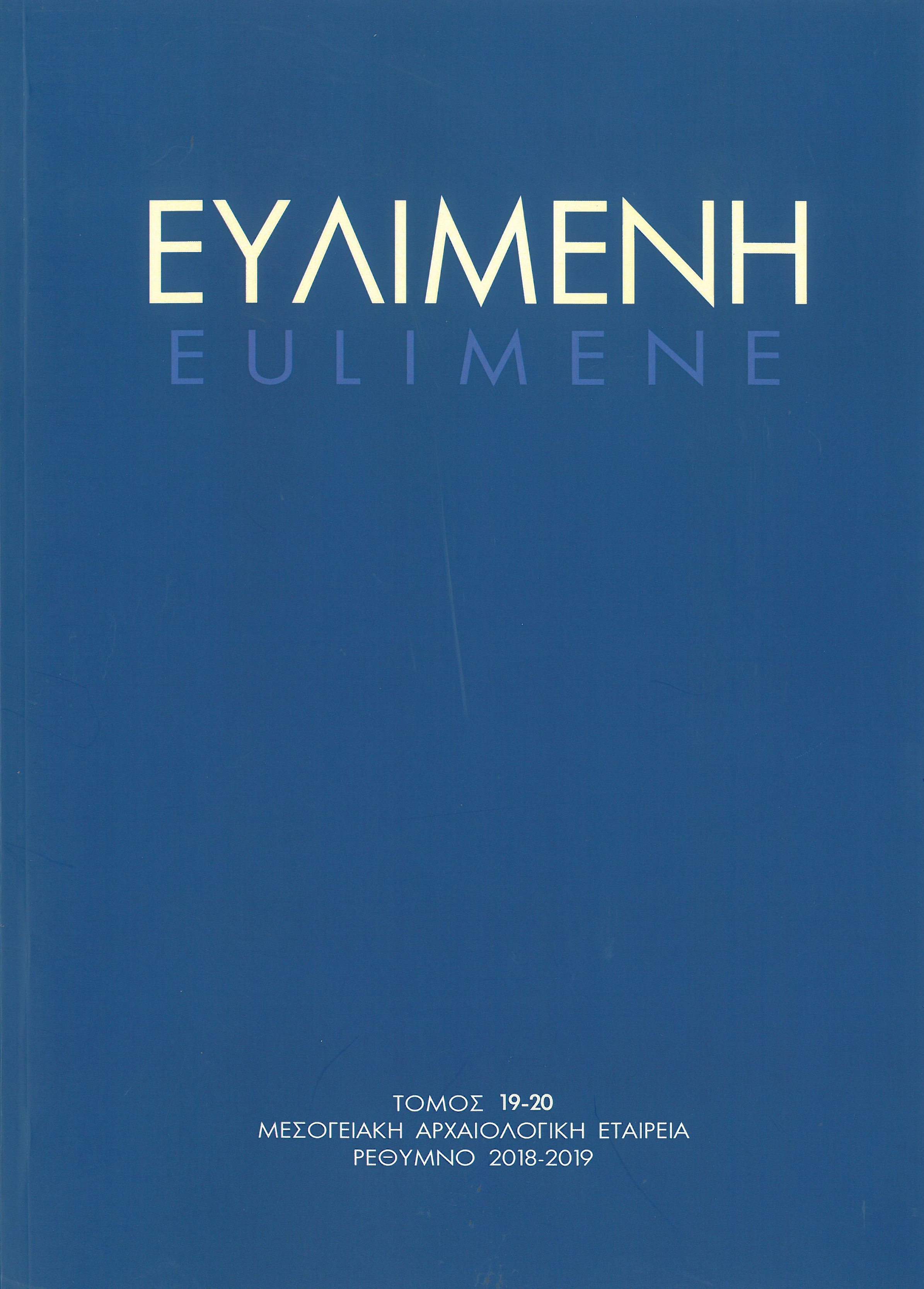Αγαλμάτιο νεαρής ανδρικής μορφής των ρωμαϊκών χρόνων

Περίληψη
Roman statuette of a young male figure. The sculpture published here, kept in the Archaeological Museum of Piraeus (inv. no 1212), is a freestanding, smaller than life-size (max. preserved height: 0.415 m) statuette of a nude young man, preserved from the waist up. Evidence concerning its provenance does not exist, as the date at which the statuette was handed over to the Archaeological Museum of Piraeus remains unknown and no further information is available. Around 1971-72, the late Professor Giorgos Despinis, who served as Curator of Antiquities at the time, entered a brief description of the object into the Museum’s Inventory. The statuette is made of white, fine-grained marble, possibly Pentelic, covered with light brown patina. Aside from the lower body and the legs, the right upper limb is missing from the middle of the arm down. Similarly, the largest part of the left upper limb, which was possibly raised, is missing, also from the middle of the arm down. Traces of a round socket, intended for the insertion of a dowel, are preserved in the centre of the broken surface of the left arm. One more circular socket is found on the left shoulder connected to a shallow, narrow groove. On the left side of the torso, the remains of an integral rectangular support (puntello) survive, whose broken surface indicates that it was angled, leaning forward. Rasp marks are visible on either side of the neck, the area covered by the curls, as well as the left side of the torso, from the armpit to the puntello. Extensive use of drill is evident in the rendering of the hair. The figure’s hair that features “anastole” above the forehead, consists of rich curls that grow unevenly, framing the beardless youthful face, covering the ears completely. Based on stylistic grounds, the statuette is datable around the mid-2nd century AD or shortly later. The preserved evidence leads to the assumption that the figure held most likely a cornucopia in his raised left hand. The statuette depicted possibly a daemon or personified a benevolent force or a river.
Λεπτομέρειες άρθρου
- Τεύχος
- ΕΥΛΙΜΕΝΗ 19-20 (2018-2019)
- Ενότητα
- ΑΡΘΡΑ
- Κατηγορίες
Οι συγγραφείς των άρθρων που δημοσιεύονται στην Ευλιμένη διατηρούν τα δικαιώματα πνευματικής ιδιοκτησίας επί των άρθρων τους, παραχωρώντας στο περιοδικό το δικαίωμα της πρώτης δημοσίευσης. Άρθρα που δημοσιεύονται στην Ευλιμένη μπορούν να χρησιμοποιούνται ελεύθερα για μη κερδοσκοπικούς σκοπούς, χωρίς δικαίωμα τροποποίησης (δημιουργία παράγωγου έργου), με αναφορά στο συγγραφέα και στην πρώτη δημοσίευση. Η Μεσογειακή Αρχαιολογική Εταιρεία διατηρεί το δικαίωμα να δημοσιεύει, να αναπαράγει, να παρουσιάζει στο κοινό, να διανέμει και να χρησιμοποιεί άρθρα που δημοσιεύονται στην Ευλιμένη σε οποιοδήποτε μέσο και μορφή, είτε μεμονωμένα είτε ως μέρη συλλογικών έργων, για όλο το χρόνο διάρκειας προστασίας της πνευματικής ιδιοκτησίας και για όλες τις χώρες του κόσμου. Αυτό περιλαμβάνει, ενδεικτικά και όχι αποκλειστικά, το δικαίωμα δημοσίευσης των άρθρων σε τεύχη του περιοδικού Ευλιμένη, αναπαραγωγής και διανομής μεμονωμένων αντιγράφων των άρθρων, αναπαραγωγής ολόκληρων των άρθρων σε άλλη έκδοση της Μεσογειακής Αρχαιολογικής Εταιρείας, και αναπαραγωγής και διανομής των άρθρων ή της περίληψης τους με χρήση πληροφορικού συστήματος αποθετηρίου.





